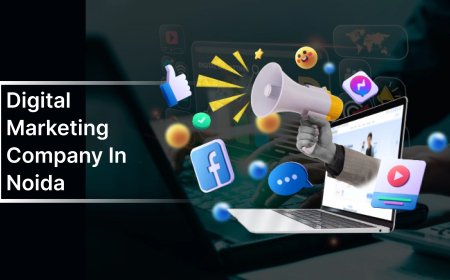Beyond Patches: How Strategic Legacy Modernization Drives Digital Transformation

In the fast-paced world of business technology, patching old software might keep the lights on, but it won’t drive growth. Legacy systems—those long-standing applications critical to business operations—often sit at the center of your IT infrastructure like aging engines. While patches, workarounds, and temporary fixes offer short-term relief, they can’t fuel long-term transformation.
To remain competitive, agile, and secure, companies must shift from patching outdated systems to strategically modernizing them. This transformation isn’t about replacing what once worked—it’s about reshaping your digital core to meet modern business goals.
In this article, we explore why strategic legacy modernization is vital, how it aligns with digital transformation, and what steps businesses can take to unlock its full value.
Why “Patching” No Longer Works in the Digital Era
For years, businesses relied on patching legacy systems to avoid the perceived cost and risk of modernization. But in today’s environment—where agility, compliance, and real-time decision-making are critical—patching does more harm than good.
-
Security Vulnerabilities Multiply
Patches are reactive. They don't address deep-rooted security flaws in legacy architecture, leaving businesses exposed to evolving threats. -
Incompatibility With New Tech
Patching does not guarantee compatibility with modern platforms, APIs, or cloud infrastructure—causing integration issues. -
Performance Bottlenecks Remain
Patches can temporarily improve stability, but performance issues like latency or crashes persist under high demand. -
High Technical Debt
Layering patches over time creates a fragile, hard-to-maintain codebase that grows more expensive with each fix. -
Limited User Experience (UX)
Customers and employees expect modern, intuitive interfaces. Legacy systems, even with patches, often fall short. -
Regulatory Risk
Patching alone won’t help meet stringent data protection or audit-readiness requirements like HIPAA, GDPR, or SOC 2.
What Strategic Legacy Modernization Really Means
Strategic modernization is more than technical updates—it’s a business-focused initiative to align technology with long-term goals. It involves rethinking systems, re-architecting applications, and embracing scalable solutions that enable digital transformation.
-
Vision Alignment
Modernization efforts must support business objectives—whether that's entering new markets, improving service, or increasing operational efficiency. -
Incremental Transformation
Rather than a “big bang” replacement, modernization is often phased, reducing disruption while delivering value quickly. -
Cloud-First Thinking
Cloud platforms allow businesses to scale resources, improve accessibility, and reduce infrastructure overhead. -
Data-Driven Architecture
Modernized systems should leverage real-time analytics, data lakes, and intelligent automation to inform decisions. -
Future-Ready Design
Solutions are built using modular or microservices architecture that supports future integration with AI, IoT, or blockchain. -
Employee Empowerment
Modern tools and UIs improve productivity, training, and engagement across your workforce.
How Legacy Modernization Powers Digital Transformation
Digital transformation isn’t just about digitizing documents or deploying a mobile app—it’s about reengineering how a business operates, serves customers, and evolves. Legacy systems, if left untouched, become the very barriers to this evolution.
-
Accelerated Innovation
Modern platforms allow faster experimentation, prototyping, and deployment of new services or features. -
Real-Time Data Availability
Modernized systems offer integrated, accurate data that informs decisions in real-time—from marketing to logistics. -
Personalized Customer Experiences
With APIs and modern UX frameworks, businesses can create more tailored digital experiences across web and mobile. -
Agility Across Departments
Teams can collaborate better using unified platforms, automated workflows, and seamless data sharing. -
Business Continuity & Resilience
Cloud-native architectures improve disaster recovery, uptime, and scalability—making the business more resilient to change. -
Cross-Channel Integration
Modern systems break silos, enabling integration with CRMs, ERPs, and third-party tools that power omnichannel engagement.
Modernization Approaches That Drive Results
No two businesses modernize the same way. Choosing the right approach depends on your system's current state, business goals, and available resources. The right strategy minimizes risk while maximizing impact.
Here's where companies often seek expert legacy modernization services to guide the process and ensure long-term alignment.
6 Common Approaches to Legacy Modernization
-
Replatforming
Move to a new runtime or platform (e.g., on-premise to cloud) while keeping most of the application logic intact. -
Rehosting
"Lift and shift" your application to a modern environment without altering the codebase. -
Refactoring
Restructure the application code to remove technical debt, improve performance, and enable easier maintenance. -
Rearchitecting
Break down monolithic applications into modular or microservices for better scalability and deployment. -
Replacing
Fully retire outdated software and replace it with a new, custom-built or off-the-shelf solution. -
Encapsulation
Wrap legacy systems in APIs to expose specific functions to newer systems, avoiding full rebuilds.
The Business Case for Investment in Modernization
While modernization might seem expensive up front, the ROI becomes evident in reduced maintenance, improved agility, and faster time-to-market. It’s a long-term investment that transforms technology from a cost center into a business enabler.
-
Lower Operating Costs
Reduced dependency on legacy licenses, hardware, and manual interventions saves significant money annually. -
Faster Delivery Cycles
Agile-ready systems reduce development time, helping businesses respond faster to customer and market needs. -
Improved Compliance Posture
Modern platforms offer built-in support for security frameworks and audit trails. -
Revenue Enablement
New services, pricing models, and customer channels become possible with a flexible tech backbone. -
Stronger Vendor Ecosystem
Businesses can now integrate seamlessly with modern APIs, platforms, and digital marketplaces. -
Competitive Advantage
Early adopters of strategic modernization can outpace lagging competitors in innovation, service quality, and operational speed.
Overcoming Challenges in Strategic Modernization
It’s understandable that many businesses delay modernization due to complexity, cost concerns, or fear of disruption. But most of these challenges can be mitigated with proper planning and expert guidance.
-
Legacy System Complexity
✔️ Start with low-risk components and create a system map to identify interdependencies. -
Budget Constraints
✔️ Break modernization into phases, showing ROI at each stage to secure funding. -
Cultural Resistance
✔️ Engage stakeholders early and provide training to smooth the transition. -
Skill Gaps
✔️ Partner with consultants or firms with deep experience in both legacy and modern stacks. -
Fear of Downtime
✔️ Use parallel environments and backups to ensure business continuity during migration. -
Undefined KPIs
✔️ Set clear goals tied to business outcomes: faster sales, lower IT costs, improved user adoption, etc.
Conclusion: Future-Proof Your Business with Strategic Modernization
In a world where technology and customer expectations are evolving rapidly, patching up legacy systems is no longer enough. Strategic legacy modernization isn’t a cost—it’s a catalyst for digital transformation.
It gives your organization the freedom to innovate, the tools to compete, and the infrastructure to grow—without being weighed down by outdated systems. By modernizing with intention and alignment to business goals, you can unlock new efficiencies, reduce risk, and move boldly into the future.
What's Your Reaction?
































































